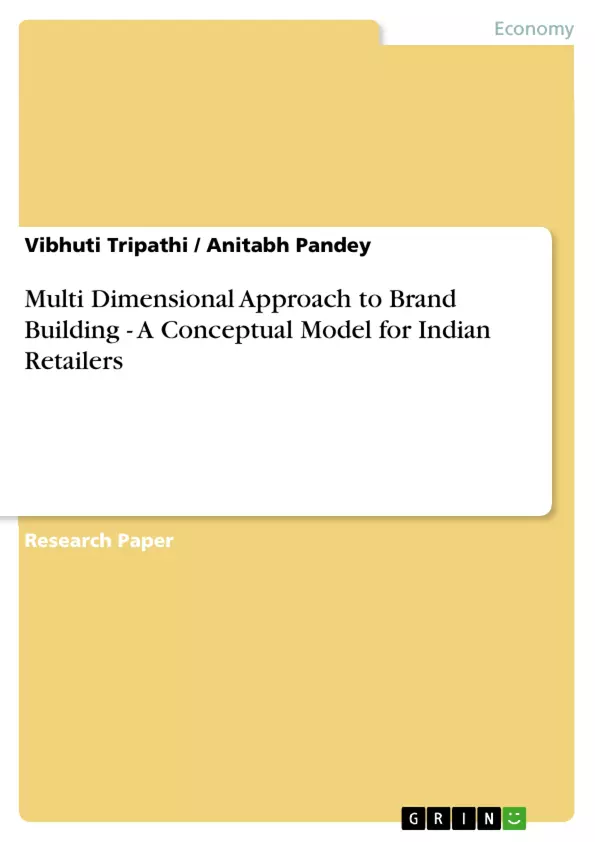Indian Retail Scenario: Organized retailing has exponentially emerged to contribute to the growth of Indian retail sector. It constitutes 3% of the total retail market and expected to grow at a rate of 42% in 2008. According to estimates provided by Technopak, organized retail in India is expected to receive investments of $25 billion, taking the size of modern retail to $75 billion by 2011. These investments imply that share of organized retail will grow from the present 3 % to approximately 15-18 % by 2011-12.
With the onset of a globalize economy in India, the Indian consumer's psyche has changed. They are well versed with the concept of value for money, quality and service standards offered worldwide, in turn they are becoming more demanding. These demands are the visible impacts of the Indian organized retail sector. The evident increase in consumerist activity is colossal; it is replicated in money making recess for the Indian organized retail sector. Indian Retail is in the midst of a retail revolution, seen in sprawling number of malls developed from 50 operational malls in 2005 to 250 mall by 20083. Multiple formats have sprung up across different cities. City landscapes are dotted with malls and customers have problems of plenty as far as deciding shopping destinations is concerned.
Inhaltsverzeichnis (Table of Contents)
- A. Indian Retail Scenario
- B. Brand Building Process
- Information Search
- Important Market Areas or Segment
- Identify Competitive Advantage
- Core Competence
- Align Strategy to right target customers
- Ally Media Strategy
- Deliver well defined Message and Image
- Diligence, Consistency, Repetition
- C. Retail Branding
Zielsetzung und Themenschwerpunkte (Objectives and Key Themes)
This paper examines the evolving landscape of Indian retail and explores the need for a multidimensional approach to brand building within this context. It analyzes how the rise of organized retail has created a new competitive environment where differentiation through experience and branding is paramount. The paper aims to provide a conceptual model for Indian retailers to build strong and sustainable brands.
- The growth of organized retail in India
- The importance of brand building in a competitive retail environment
- The need for a multidimensional approach to retail branding
- The impact of technology and customer expectations on retail branding
- The role of experiential delight in building retail brand equity
Zusammenfassung der Kapitel (Chapter Summaries)
A. Indian Retail Scenario: This section outlines the rapid growth of organized retail in India, highlighting factors driving its expansion, including the rise of the Indian consumer's purchasing power, the increasing acceptance of branded merchandise, and the emergence of new retail formats. It points to the evolving consumer psyche and the need for retailers to adapt quickly to these changes.
B. Brand Building Process: This section delves into the broader concept of brand building, presenting it as a strategic process that goes beyond logos and names. It emphasizes the importance of understanding customer perceptions and leveraging competitive advantages to create a strong brand identity. The section highlights the key internal and external factors that influence brand building, outlining six stages that companies need to follow for successful brand building.
C. Retail Branding: This section focuses on the specific challenges and opportunities presented by the Indian retail landscape. It highlights the need for retailers to move beyond traditional branding approaches that focus solely on products and services and embrace a multidimensional approach that incorporates store environment and experiential delight. The section argues that in today's competitive market, retailers must position themselves as brands rather than simply sellers of brands.
Schlüsselwörter (Keywords)
The key themes and concepts explored in this paper include: organized retail, Indian retail sector, brand building, multidimensional branding, retail brand equity, experiential delight, customer expectations, competitive advantage, brand strategy, and consumer behavior.
- Quote paper
- Dr. Vibhuti Tripathi (Author), Anitabh Pandey (Author), 2008, Multi Dimensional Approach to Brand Building - A Conceptual Model for Indian Retailers, Munich, GRIN Verlag, https://www.grin.com/document/117137



